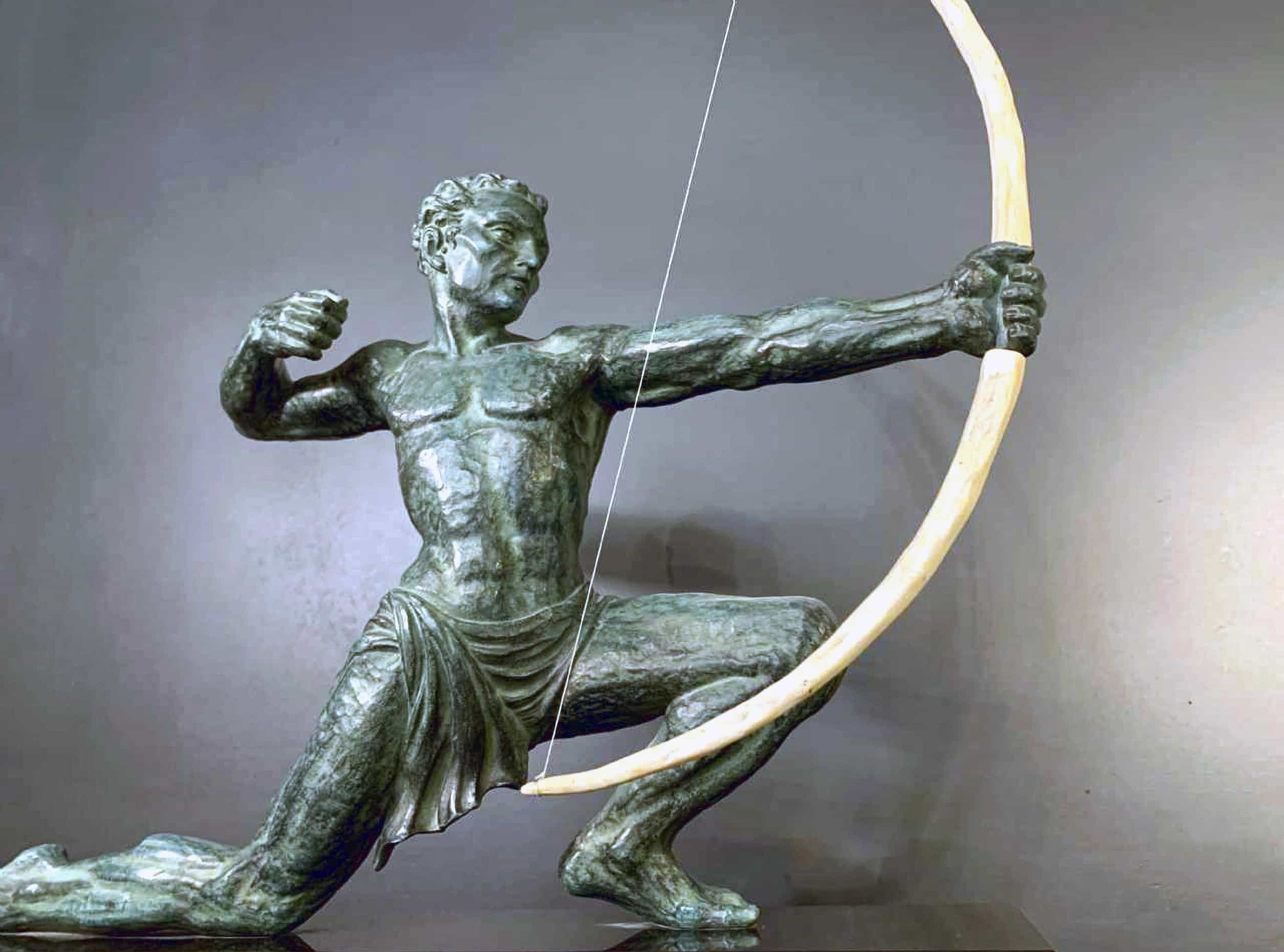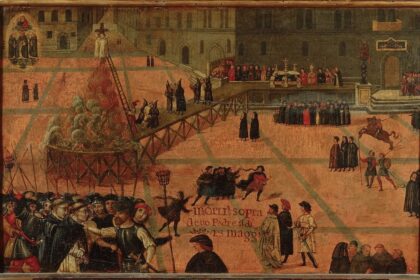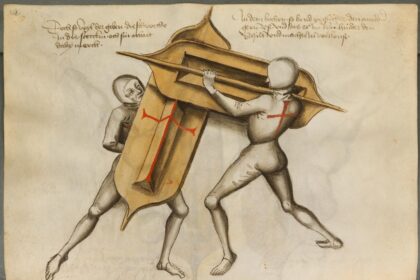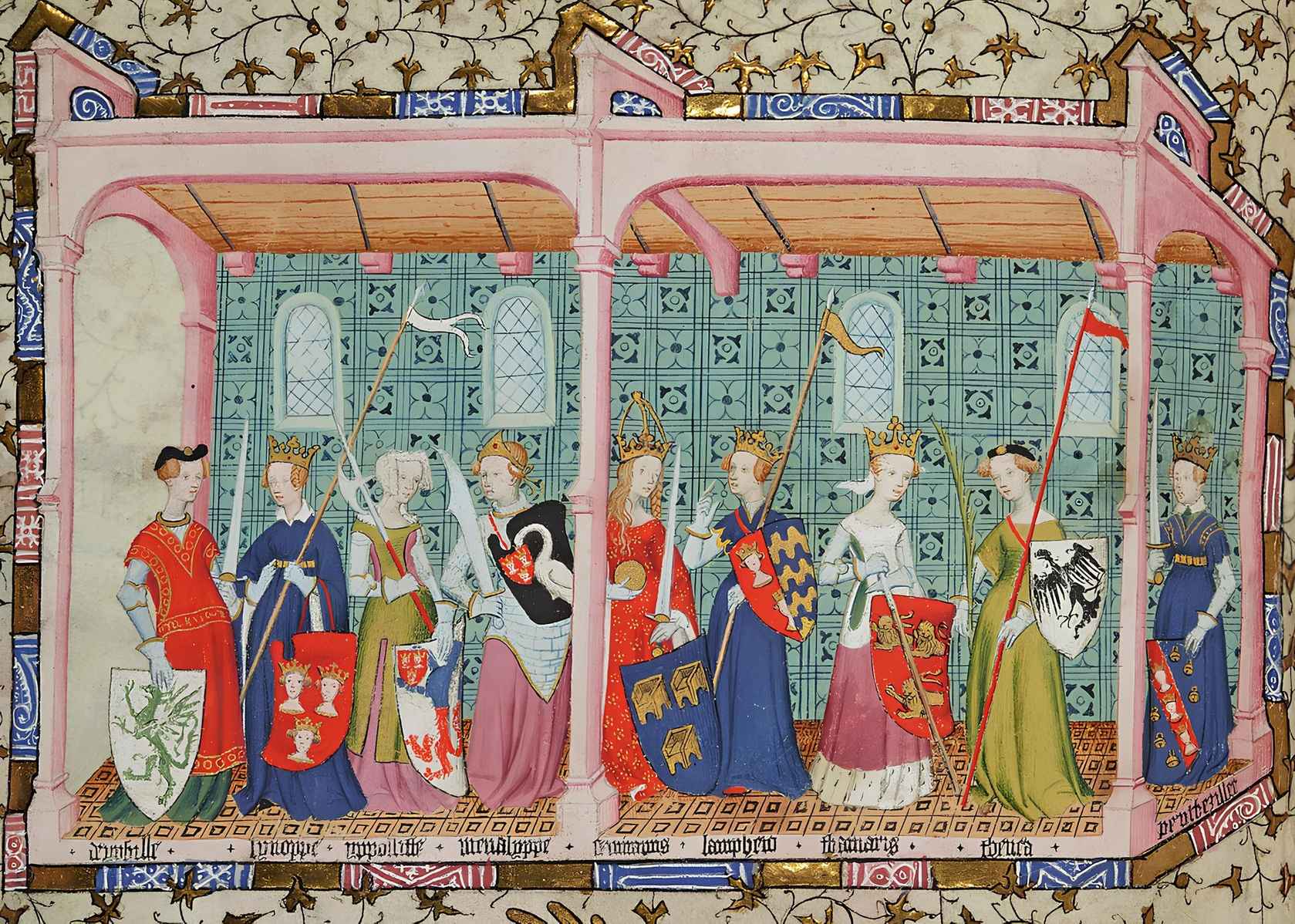Many people have a great misunderstanding of archers, especially those who have been influenced by games, movies, and TV shows, particularly fantasy movies such as The Hobbit or The Lord of the Rings. Many people think that medieval archers were similar to elves in the movies—slender and delicate. Some even believe that archers in history were fragile and were only capable of shooting arrows in battle. According to this misconception, archers use numerous arrows to kill a single enemy, quickly retreat if the enemy gets closer, and leave the field to the close combat soldiers. Because if the enemy breaks through the archers’ position, the fragile archers would be unable to resist and would disperse. Although many people have such a stereotype, it is largely a fallacy. Once you understand the amount of force medieval archers had to use to draw a bow, you will realize that it takes a great deal of strength to be an archer.
The Archers of West
Pulling traditional bows (including all kinds of medieval bows and arrows) requires a great deal of strength, as the draw weight of war bows was quite high. The famous English longbowmen, who fought in the Hundred Years’ War against France, had great combat achievements that made many people think that the knights who were rampant in medieval Europe were powerful looking but actually weak in combat.
Do you know how difficult it was to pull the English longbow used by longbowmen? The unit of measurement used for this is called the “bow draw weight.”
The bow used by English longbowmen on the battlefield was a one-piece bow, with the entire bow body mostly made from a single piece of yew wood bent into a curve. Its length was approximately between 5.9 and 6.6 feet (1.8 and 2 meters). The yew wood is hard and elastic but not easy to bend. So, the bow must be made longer. This makes the English longbow, although a one-piece bow, very powerful and have tremendous killing power.
In order to ensure killing power and armor-piercing ability, the English longbows used on the battlefield generally had a pull weight of 120 pounds (54.5 kg) or more. Archaeologists have replicated some longbows using the same materials as those found on sunken ships, and the draw weights of these longbows were measured to be between 120 pounds and 160 pounds (54.5 to 72.5 kg) and even higher weights.
Such a high draw weight of the longbow means that archers had to have equal or even greater strength; otherwise, they would not be able to draw the longbow at all. These figures are the minimum force required for a person to draw the longbow (a.k.a., war bow). Not an exact comparison, but imagine a person who lifts a weight of 120 to 160 pounds (54.5 to 72.5 kg) with one hand; can they be slender and weak? The archers of history were never as vulnerable and fragile as they are stereotyped in popular culture.
The Archers of East
There are more ways to understand how strong archers were in reality. Let’s take a look at the archers of another nation whose people are often smaller in stature. Chinese medieval archers were equally impressive as the Western archers. Although the Song Dynasty (960–1279) had the powerful weapon of the huge repeating crossbow mounted on walls and ships, the Song army also attached great importance to archers and bows. The draw weight of the Song Dynasty’s bows was measured in “dou” and “shi” (pronounced “dan” where ten dou equals one shi), with war bows generally classified as “eight dou”, “one shi”, or “one and two thirds shi”.
One shi during the Song Dynasty was equivalent to 92.5 Song jin (one Song jin being equal to 640 grams or 1.41 pounds), which means that Song Dynasty bows of eight dou, one shi, and one and two thirds shi were approximately equivalent to bows with a weight of 90 pounds (41 kg), 130 pounds (59 kg), and 180 pounds (82 kg), respectively.
During the early Song Dynasty, one jin (a unit of weight) was equivalent to 680 grams, but by the middle of the Northern Song period, it had been standardized at 640 grams. By the early Southern Song period, it had decreased to around 625 grams. The weight standard used in this calculation is based on the Northern Song period standard, and the legendary Chinese general Yue Fei was said to be able to draw a bow with a draw force of three shi, making him a remarkable archer.
During the Qing dynasty, the longbow used for archery was standardized at a weight of 100 pounds (around 45 kg). In the military exams, there were several tests related to archery, such as shooting while standing or while riding a horse. The first test in the martial arts exam was pulling a bow. For this, a “strength bow” was provided for the examinees to pull. Although the strength bow was not used in real combat, it was an important tool to measure the archers’ strength and martial arts skills. The examinee archers could try three times, and the score was based on whether they could pull the bow to full draw above their heads.
During the Qing dynasty, “strength” was used as the unit of measurement for bow draw force. One strength was equal to 5.85 kilograms, or approximately 13 pounds. The strength bows used in the martial arts exam were divided into four grades. A strength of more than 12 (approx. 156 lbs; 70 kg) was called “outstanding,” or “tiger strength.” 12 strength was called “number one,” 10 strength (approx. 130 lbs; 58.5 kg) was called “number two,” and 8 strength (approx. 104 lbs; 47 kg) was called “number three.”
After the mid-Qing dynasty, in order to prevent examinees from showing off and getting injured, they were generally not allowed to try bows with a pulling force of 15 or more (approx. 195 pounds; 88 kg).
Muscles Used in Archery
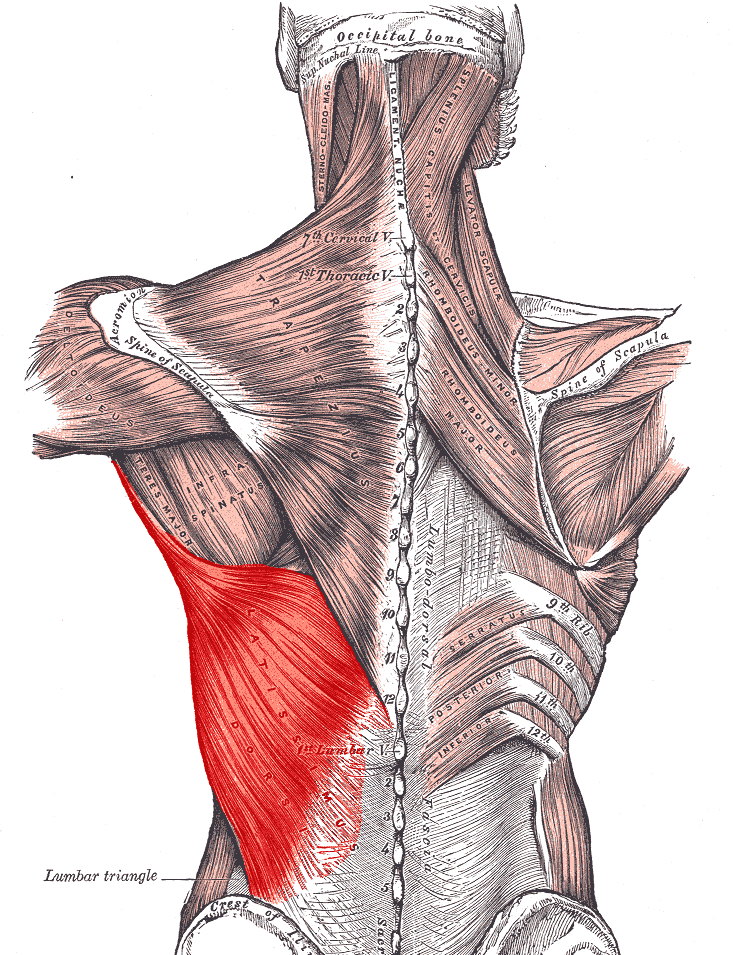
Contrary to popular belief, the main body parts used in archery are not the arms, but rather the back muscles, specifically the latissimus dorsi. This means that a qualified medieval archer was usually a big, strong person with a large frame and strong muscles, much stronger than many modern people. In order to pull the bow back, it is necessary to use the back muscles in a similar way to doing a one-armed dumbbell row. Therefore, an archer’s physique was not actually slim and agile as often depicted in movies and games, but rather a big and strong one compared to an average human.
Most people today learn archery by practicing with a 15-pound soft bow and start using a 30- to 40-pound stiff bow only after gaining some experience. After some time, most people mainly use a 55-pound traditional bow for practice. And do not think that a bow of this weight is easy to pull. If you have no training, even pulling a 30-pound bow can be very difficult, and almost all inexperienced beginners cannot pull it to full draw.
To put into perspective how strong archers are, a person who is around 5 feet, 11 inches (180 cm) tall and weighs around 175 pounds (80 kg) will find it difficult to pull a traditional bow that is around 65 pounds fully drawn. One cannot imagine how medieval archers, who used to use bows with 100 pounds of draw weight, would have had slender and delicate bodies. In movies, the actors who play archers make it look effortless, but that is only because they use props that do not require much strength. Even children can pull those bows.
Were Archers Vulnerable in Combat?
People believe that archers in history were vulnerable in close combat because they expended all their strength by pulling the bowstring, which was already too hard. Additionally, it is believed that archers always had to wear light clothing and no armor to facilitate the difficulty of pulling the bow since they would not fight against heavily armored infantry anyway.
This view seems reasonable, but it is actually incorrect. First, medieval archers on the battlefield would not have had many opportunities to shoot arrows if they did not occupy advantageous positions. In a head-on battle, archers would typically only shoot three arrows before the enemy approached, as the range of a bow was only around 660 to 990 feet (200 to 300 meters). All infantries could quickly get over such a short distance. Therefore, archers often shot only a few arrows before the enemy arrived.
Why Did Archers Wear Light Armor?
How is it possible for archers, who have only fired a few arrows, to feel fatigued during a battle? The idea that archers wore light clothing and no armor to facilitate shooting arrows does have some truth to it, but it also depends on the circumstances and location. In Europe, for example, most archers did not wear plate armor on their upper bodies after the introduction of plate armor, nor did they wear iron gauntlets, as plate armor was inconvenient for archers and interfered with their ability to exert force. However, other types of armor, such as chainmail, did not have this problem.
In contrast to the problem faced by European archers when wearing plate armor, ancient Chinese archers did not have this issue. Because the Chinese armor used was already designed to facilitate archery. One reason why Chinese armor did not include iron gauntlets was to enable archers to shoot arrows easily.
Some Archers Actually Wore Heavy Armor
One can easily observe from surviving Chinese paintings, murals, and sculptures that so-called archers were fully equipped with heavy armor and helmets. For instance, even heavy cavalry in full body armor in the painting “Emperor Taizong’s Campaign Against the Eastern Turks” carried bows and arrows. The Tang Dynasty military treatise “New Book of Tang” described the Tang army’s equipment and weapons, which included bows, various melee weapons, armor, and helmets, but only soldiers with garrison duties were not provided with armor:
“The Tang soldiers equipped themselves with a bow, thirty arrows, a Hu-Lu (a container for holding arrows), a horizontal knife, a whetstone, a quiver, a felt hat, a felt garment, and rattan shoes. They brought their own nine dou of wheat and two dou of rice. All their armor and weapons were stored in the warehouse. When they went out, they received them before departure. Only those who guarded the outpost were provided with bows, arrows, and horizontal knives.”
New Book of Tang, Volume 50, Military Provisions
The Chinese poet Du Fu also described the Tang army’s bow and arrow equipment in his poem “Ballad of the Army Carts“: Wagons rattling and banging, horses neighing and snorting, conscripts marching, each with bow and arrows at his hip.” This indicates that the Tang army did indeed provide each soldier with a bow.
The record of military campaigns and “Taiwan Foreign Records” both provide clear descriptions of General Koxinga’s army structure and weapon equipment. They mention that the elite Iron Man Army of Koxinga’s forces had not only sturdy iron helmets, armor, and other protective gear but that each soldier also carried a bow and a variety of weapons for both long-range and close combat. In addition, they were equipped with fearsome horse-chopping broadswords that were carried by hand:
In February, the bravest and strongest soldiers were selected as Koxinga’s personal troops, and they trained at the Yandwu Pavilion in Xiamen Port. They could each pull a bow up to 500 jin (550 lbs; 250 kg) and still move around freely on the training grounds. With the help of a skilled technician named Feng Chengshi, they wore thick iron helmets, armor, gauntlets, skirts, and shoes that arrows could not penetrate. They also wore iron masks that covered only the eyes, ears, nose, and mouth, decorated with colorful patterns resembling ghostly figures, and wielded horse-chopping broadswords.”
Taiwan Foreign Records, Volume Four.
Therefore, archers in history—especially medieval archers—were not completely defenseless in close combat. They had combat capabilities and could switch to using melee weapons such as swords and spears. However, their fighting ability depended on the quality of their armor and their organization, such as the tightness of their formation and whether they could form a battle formation when the enemy attacked.


